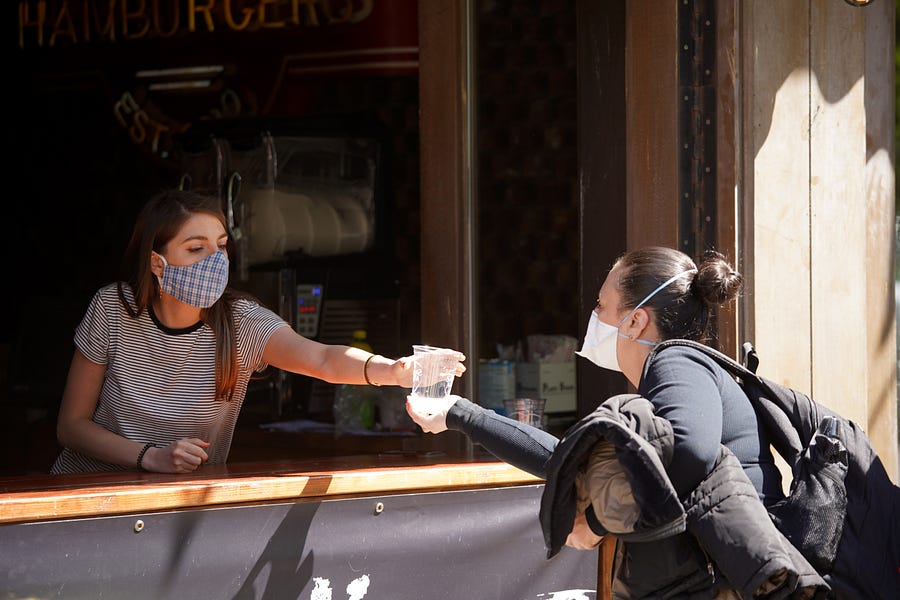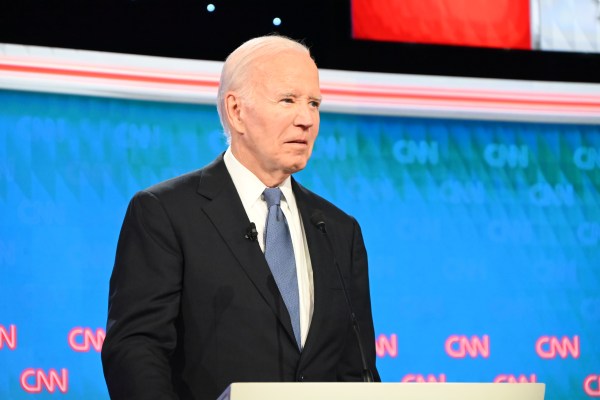It’s been an axiom of our COVID crisis: The coronavirus is so dangerous and difficult to stop in large part because many who spread it don’t even know they have it. The problem posed by so-called “asymptomatic carriers” has informed our public policy response to the virus at every level. It’s why our leaders decided it was important to isolate the young and healthy as well as the sick and vulnerable. It’s one reason behind universal masking: Surgical masks don’t keep you from getting the virus, but they help keep people who might be infected from spreading it unwittingly to others.
So you can imagine many people’s consternation Monday following a report that a World Health Organization had declared asymptomatic spread of the coronavirus “very rare” at a press conference that morning: “From the data we have,” Dr. Maria Van Kerkhove declared, “it still seems to be rare that an asymptomatic person actually transmits onward to a secondary individual.”
The statement went off like a bomb on social media, with many using it to argue that the aforementioned policy regime had been misguided from the start. Others simply saw it as a bolt of unbelievably good news: “Translation: sending kids back to school does not require millions of test kits,” tweeted Sen. Rand Paul.
Unfortunately, the news isn’t quite as good—or, if you prefer, as destructive to the previous public health consensus—as it seems. The primary culprit appears to have been a matter of unclearly defining terms.
What is “an asymptomatic person”? In the sense we usually use the term, the answer seems obvious: It’s a person who doesn’t feel sick. If Van Kerkhove were saying that only sick-feeling people, or people exhibiting symptoms of sickness like coughing, are capable of spreading the disease, that really would be a foundation-shaking blow to everything we thought we knew about the virus.
Even from her somewhat vague comments at the press conference, however, there was reason to suspect this wasn’t the sense in which Van Kerkhove was using the term. Instead, she seemed to be drawing a distinction between asymptomatic carriers and those she described as in their “pre-symptomatic phase, which means it’s a few days before they actually develop severe symptoms.”
That distinction initially seemed to add to the confusion: Isn’t a presymptomatic person by definition asymptomatic? The matter wasn’t cleared up until after the press conference, and even then you had to squint. A few hours later, Van Kerkhove took to Twitter to point toward some WHO documentation that shed light on the far narrower definition of “asymptomatic” that she had been working with: those infected people who “do not ever develop any symptoms, although they can shed virus which may then be transmitted to others.”
It’s a definition, in other words, which explicitly excludes presymptomatic carriers. And that, in turn, means that the plainest reading of her statement seemingly isn’t the sense in which she meant it at all: An “asymptomatic person” might only rarely transmit the virus, but that doesn’t mean people who are on their way to becoming symptomatic don’t.
And we’re already pretty sure that presymptomatic carriers do transmit the virus. One study performed by Chinese researchers and published in Nature magazine in April, for instance, found “the highest viral load in throat swabs at the time of symptom onset, and inferred that infectiousness peaked on or before symptom onset.”
So it might not be time to throw away your masks just yet. But that doesn’t mean the point Dr. Van Kerkhove was making isn’t potentially important. To return to Sen. Paul’s point about schools: No asymptomatic transmission wouldn’t mean that just keeping sick kids home would be sufficient to prevent the disease’s spread, but it would mean administrators and teachers wouldn’t have to worry that a COVID breakout was festering invisibly among their students with none actively coming down sick at all.
“If what she says is true, it means that people who never become symptomatic are not spreaders,” Yale public health professor Dr. Howard Forman told The Dispatch. “And we know that children are the least likely to be symptomatic. And therefore this would seem to imply … that in general, children, as long as they’re asymptomatic, are not going to be spreading it to one another. I mean, that would be good! If we even knew that anyone could not spread it to one another, that would be a very big step.”
Nevertheless, several scientists took issue with the way Van Kerkhove communicated that information at the press conference—in a way that was both confusing and seemingly not tied to any actual new publicly available data. Forman said she seemingly “went out over her skis on this.” Dr. Megan Ranney, an emergency physician and professor at Brown University, agreed.
“I read it and I went, ‘Where is the data?’” Ranney said. “I would be thrilled if what the WHO has said is true, but I personally have not seen any data or studies to back up that assertion. … And I worry, because the WHO made statements on ibuprofen early on based on one hypothesis that was never backed up by data. And so until I see why they’re making a statement, I have to withhold judgment as to whether it’s true or not.”
She went on: “I would just urge the WHO that before they make any statement like that, which is going to drastically change the way that all of us approach prevention of spread of this virus, and which—I don’t want to say that it contradicts published data—but it’s just such a dramatic assertion to make, to make sure that should be backed up by peer-reviewed, published data.”
For Ranney, the whole kerfuffle was evidence of the unusual squeeze the current crisis has placed on the public health community: With people dying every day, there’s an extraordinary need to move quickly in research and reconnaissance against the virus.
“Traditionally in science, we wait to share our opinions publicly until we feel confident about our expertise and competent about the quality of the knowledge that we have,” she said. “But particularly right now, when so many people are still being infected and dying across the world, there’s enormous urgency to speak quickly. And if we waited for definitive knowledge, we would still be doing nothing, right? So we have a public health imperative to act.”
But that need for speed increases the likelihood of conflicting public messages—which creates a real danger of the public growing skeptical and tuning the experts out.
“When someone inevitably says some thing that ends up not being accurate, it does have the potential to hurt the public’s trust in science,” she said. “I’m so concerned about public trust, because that’s the most important thing for public health—is that we have the public’s trust in our public health messages and campaigns. Whether they be vaccinations or tooth brushing or exercise, you know—all of it depends on us believing the people that are giving us the messages.”
Photograph by Rob Kim/Getty Images.






Please note that we at The Dispatch hold ourselves, our work, and our commenters to a higher standard than other places on the internet. We welcome comments that foster genuine debate or discussion—including comments critical of us or our work—but responses that include ad hominem attacks on fellow Dispatch members or are intended to stoke fear and anger may be moderated.
With your membership, you only have the ability to comment on The Morning Dispatch articles. Consider upgrading to join the conversation everywhere.